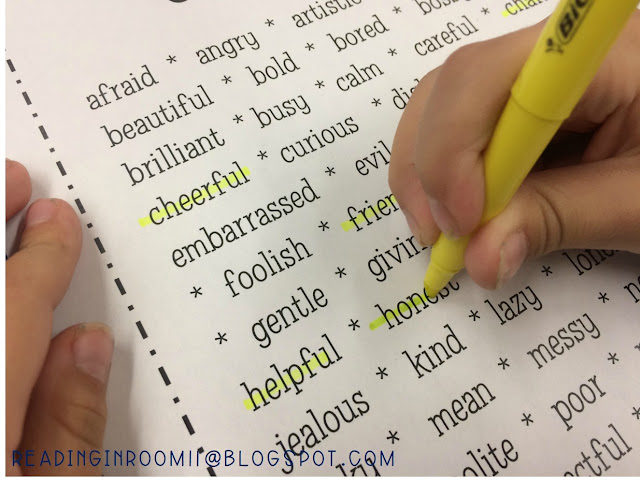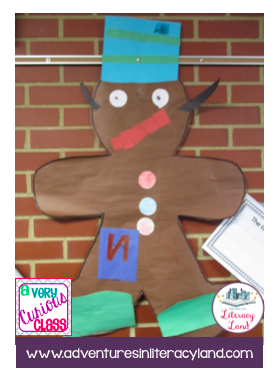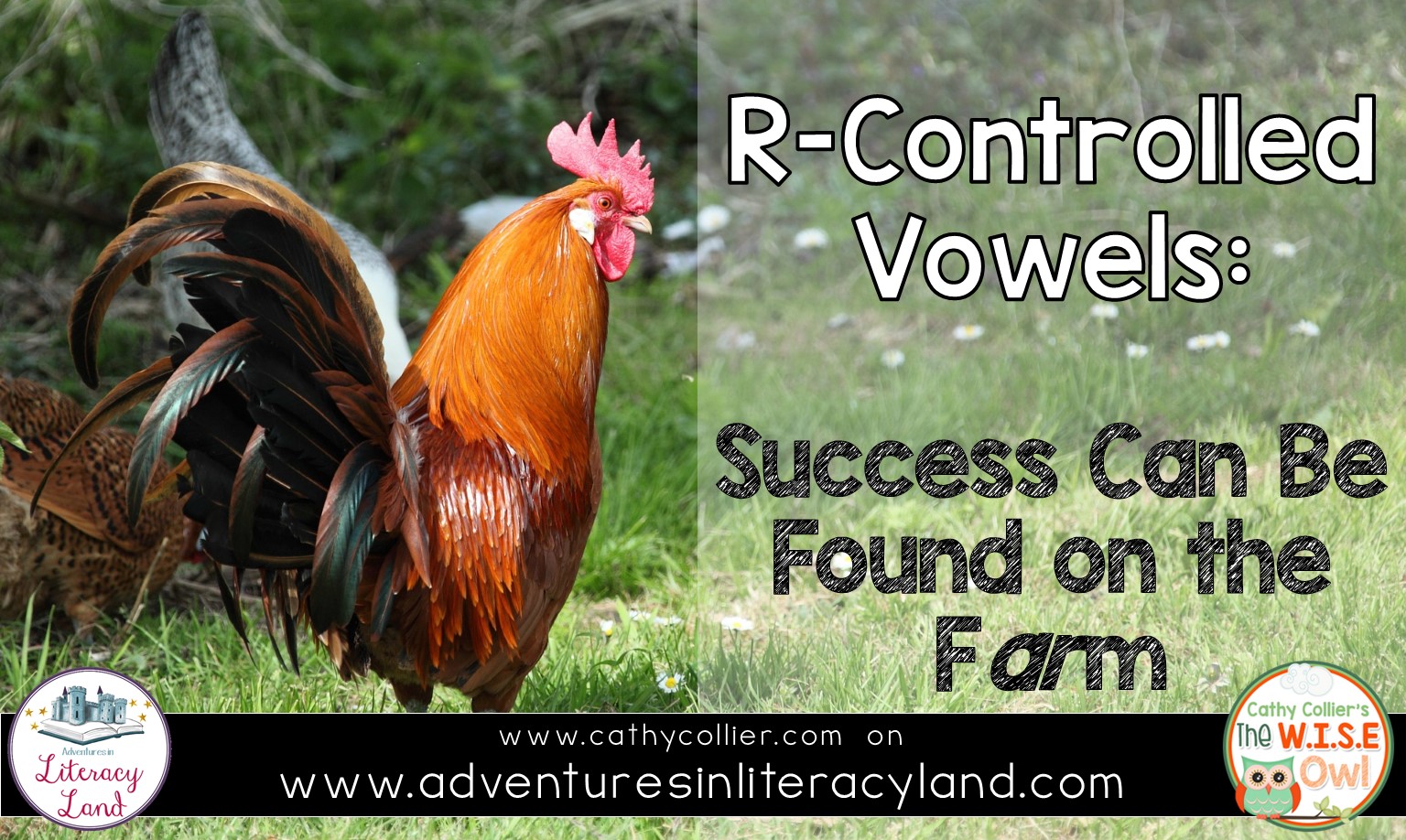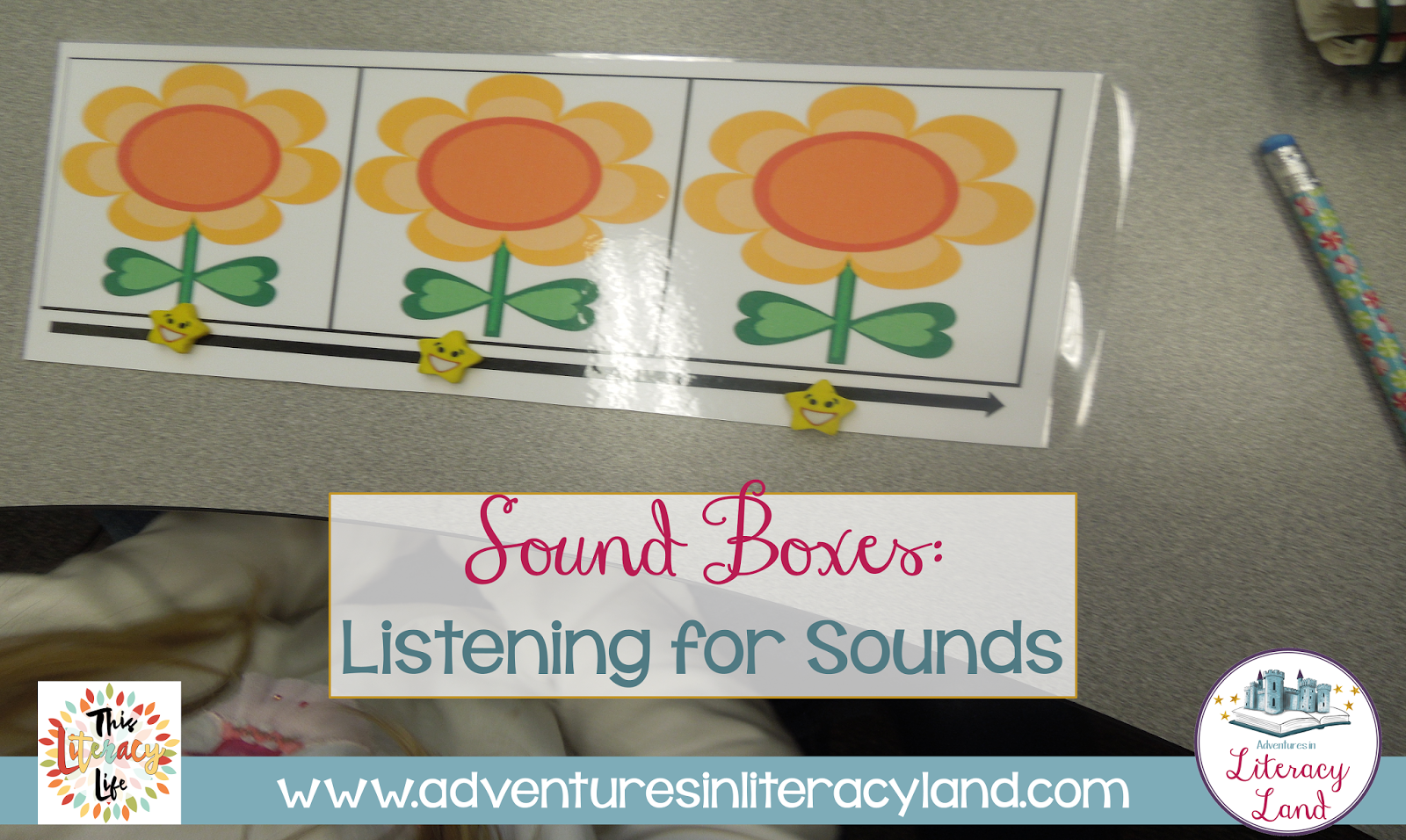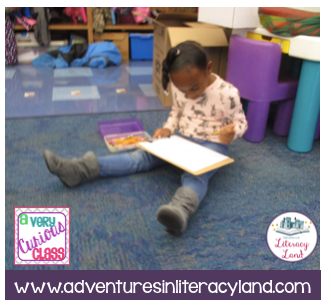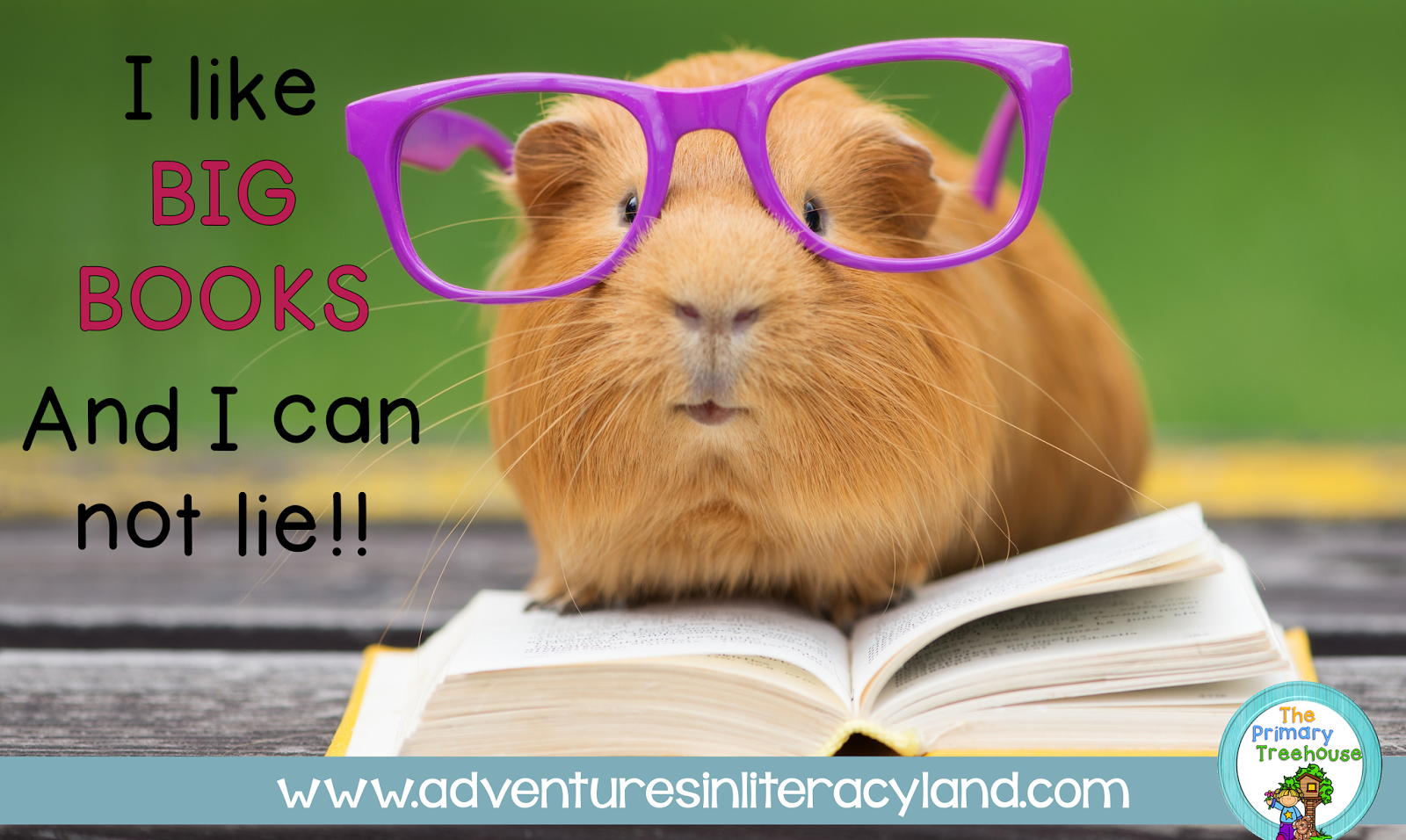
The Power of One Word
Earlier this year I was intrigued by a blog post from Tammy over at Forever in First. She wrote about the book Moo! After checking it out myself, reading it to my students, watching my students read it over and over, I witnessed the power that one single word (plus punctuation) can have! And this only led to more books...

Exploring Software and Websites to Support Reading Comprehension
As teachers, we look for new ways to present information all...the...time, don't we? Pinterest, blog posts, Facebook, TPT, Instagram, and websites are all sources of help for teachers, and teachers are great at sharing lesson ideas they find. Today, I thought I'd do some sharing too. We have been exploring software and websites to support our kiddos with comprehension, so I'll share a review of what we've learned.

Alphabet Books are for Everyone!
And you thought they were just for the younger crowd! Did you know that children in all grade levels can benefit from lessons learned in various alphabet books? There are so many different alphabet books that serve different purposes and can be used in many different ways.
Posted by
Andrea Crawford

Warm Up with Poetry: Making Your Poem of the Week Valuable
I have done a Poem of the Week for years. The poem helped cover many quick lessons during the introductory week and review lessons in the weeks that followed. The poem of the week were generally chosen or created to integrate another lesson in reading, math, science, or social studies.
More Winter?
More Winter?

A Quick & Easy Way to Teach Character Traits
How many times have you asked a student to describe a character and they start making a list of their eye color, hair color, etc.? Or perhaps they say my all time favorite answer: nice. Here are some ways that you can start getting students to dig deeper!
These resources are available in a free download.
Inside/Outside:
The first step is to explain the difference between inside and outside characteristics. Choose a character and use this template to work through the character traits. Start with the easiest: outside. Students can make a list on the outside of physical characteristics like eye color, hair color, height, or type of animal. Then you can turn your attention to the inside. Word Lists:
The inside characteristics/traits can be difficult for students to come up with independently. You can always give examples from the book.
This great word list is from Colleen at Totally Terrific in Texas.
I love to go through these lists with students and highlight all of the words that might describe the character. Then we go through and choose the words that are the best fit.
I often have students keep a copy of these lists in their folders to refer back to when they are answering questions independently.
Student Character Traits:
Now for my favorite activity - having classmates describe each other. I printed out a list for each student and had them write their name at the top. Then we took turns passing the papers around each student highlighted one positive character trait of that person. We kept passing the paper until everyone highlighted a trait for each student.I took the results and created a wordle for each student. I have also put a student's picture in the middle of a piece of blank paper and students have taken turns writing a positive trait on the paper.
Personal side note: This can be an incredible moving and rewarding activity. I teach small groups of students receiving Tier 2 and 3 support and their confidence is often affected by their academic struggles. I have done this with 1st graders through 5th graders and the results are always heartwarming. I love seeing the looks on their faces as we read the positive things their peers had to say about them!
I hope that you find these ideas helpful to you and your students! Please let me know in the comments if you have any questions or other helpful ways to teach character traits!
Click HERE to download the Inside/Outside Character Trait Printable as well as the word lists.
Pin for later:

Oral Storytelling with Picture Walks

Using Fairy Tales to Enhance Comprehension Skills
When teaching a new comprehension skill, many times I use fairy tales since they are a familiar story to many children. We don't have to take the time to think about the plot of the story and can focus on that skill.

Student-Created Gingerbread Variations
I'm sure many of you have read multiple versions of The Gingerbread Man story. I decided to take it a step further this year and have my kids work in teams to create their own gingerbread story.

R-Controlled Vowels: Success Can Be Found on the Farm
Historically, students in my school have shown several weaknesses on the PALS Spelling test: ng/nk, r-controlled vowels, vce, and vowel pairs. Each of these spelling patterns have "rules," but they aren't really rules. Rules shouldn't be broken and, as you know, spelling rules are broken all the time, but it can give a student a place to start. BUT, R-controlled vowels are especially hard because there aren't really any rules.

Oral Storytelling with Families
Last month I wrote about our need to build oral language in order to support the reading and writing of our students. We can do this in so many different ways: routines we establish, lessons that we plan, or the games we play. But most of the language that students acquire comes from their homes. How can we help to support families?

Sound Boxes: Listening for Sounds
One of the things I love to do with students is to help them manipulate phonemes in words. This helps them to think about the sounds they hear in the words and gain a better understanding of words. As they work with the sounds, they can actually attend to the sounds and make words.
Posted by
Andrea Crawford

Increasing Motivation with Early Morning Book Club
As a teacher, what has been your biggest challenge to overcome? Perhaps it's been juggling planning and prep with a busy schedule. Maybe it's been working with the child in the classroom who never has homework, always needs to use the bathroom or run and errand, and never stops talking. It might even be working with difficult parents. In my situation, the obstacle I lose more sleep over and stress about is reaching what Donalyn Miller in The Book Whisperer calls, "The Dormant Reader". Yes, I have worked with all reader types throughout my teaching career, but this one is personal. This one is one of my own in my own home.

Keeping Them Motivated To Write
This year, my students are struggling with writing. Most of them do not enjoy writing, but I think for many of them it is because they struggle with it. With the holidays approaching and interest in school dwindling in favor of all things snow and Santa, I wanted to find ways to make writing exciting in hopes that the excitement will carry over into the new year.

Wants and Needs and Knowing the Difference
WANTS and NEEDS and knowing the difference is a Kindergarten Standard of Learning in Virginia. It's sounds impossible, but it can actually be a really fun unit for kindergartners. They understand the concept of "want," so you really just need to help them think about what they need. I like to teach this unit between Thanksgiving and Winter Break.

A Quick & Easy Way to Teach Vocabulary
I want to share my favorite vocabulary activity with you! One of the great things about this Vocabulary Graphic Organizer is that it can be used K-5 and across all subject areas. There is a free copy of the organizer later in this post.

Kids Creating: Games For Learning
My students love to play games, but I was struggling to keep up with them in terms of differentiation and keeping it fresh. One morning on my way to work, I had a brainstorm: Why can't they help make games to meet their needs?!?

Encourage Imagination and Oral Storytelling with Spot
With each new set of students that we meet each year, one thing has become increasingly evident: oral language needs to be strengthened. This could be for a number of reasons: more screen time, meals on the go, less playtime (recess too), or other changes in a culture. But regardless of the reasons, as teachers we have to support language development. Without oral language skills, comprehension, writing, and math explanations are much more difficult. So what can we do?

Five Unique Ways to Build Reading Fluency
Reading is like riding a bike. You watch little ones beginning to ride a bike, they're wobbling all over the place. But as we practice and practice and practice, we don't even think about peddling anymore. Eventually we can ride with no hands. – G. Reid
Students' reading fluency develops just like bike riding skills. Our little ones start off reading word by word with occasional "falls", but with lots of practice, they gain speed and momentum to glide along and make meaning. The challenge of reading fluently requires several subskills in order for a reading to experience fluency success. What are those skills?

5 Simple Ways to Embrace the Holidays without Sacrificing Content
Are you looking for simple ways to embrace (and survive!) the holiday season without sacrificing the content you are responsible for teaching? My hand is raised! My students have fun each and every holiday season in my classroom, but I never stop teaching. You will not find my students and I watching the Grinch on a Friday afternoon...Read on to find out how you can incorporate the holidays so that your students still have fun, but continue to teach at the same time!

I Like Big Books and I Cannot Lie!
Up-to-date big books can be hard to come by. They are expensive and not a priority in many school's budget. So how can I implement big books in a classroom when I don't have the money to do so?
Subscribe to:
Posts (Atom)







